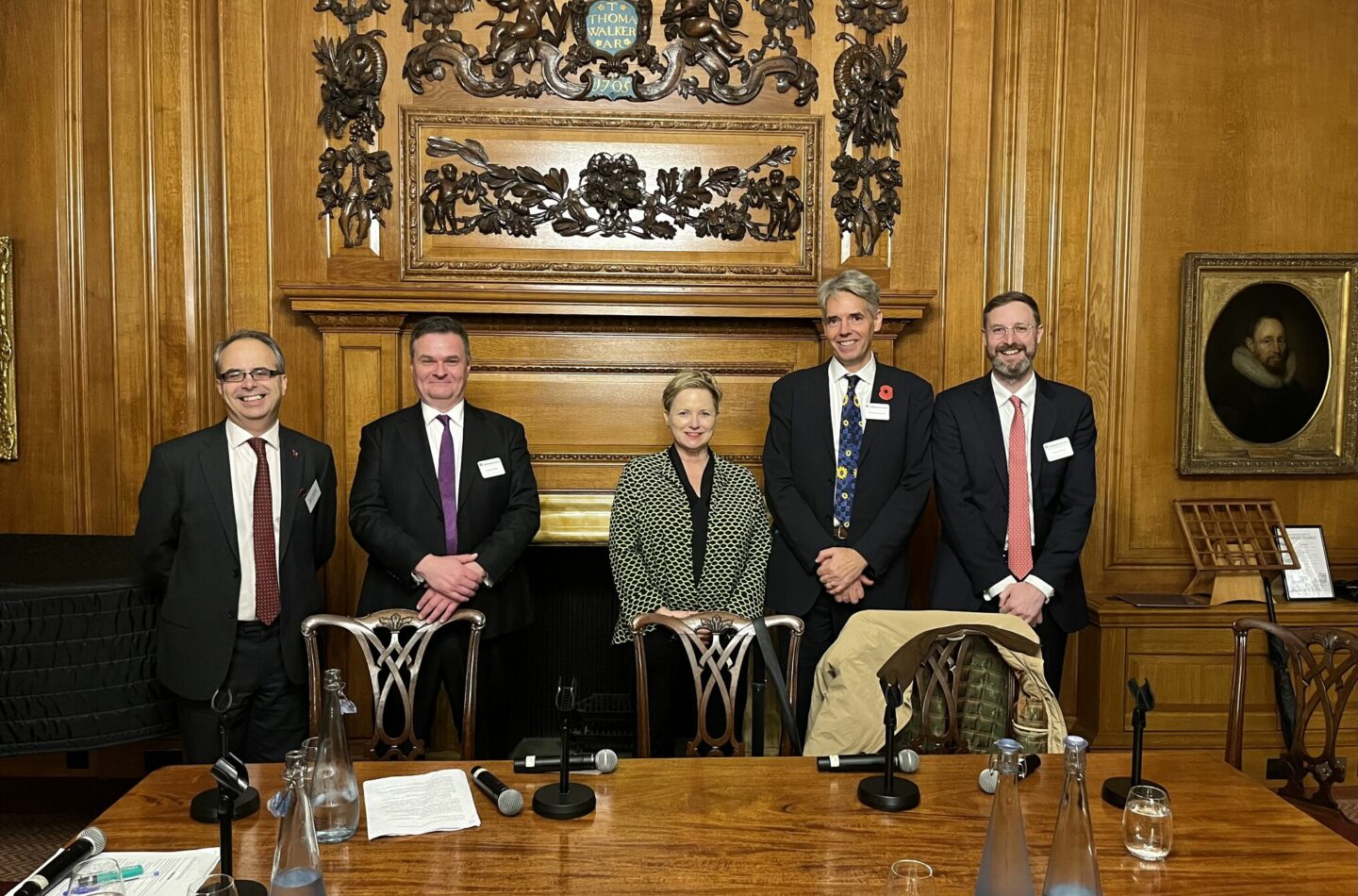Harbour Underwriting and Hailsham Chambers jointly hosted an event at Inner Temple on Thursday, 2 November, to discuss ‘Litigation Funding post-PACCAR: Where are we now and what does the future hold?’. Our managing director, Rocco Pirozzolo, moderated the panel discussion
Rocco introduced an august panel comprising Hailsham Chambers’ Mark Friston, Alexander Hutton KC and Thomas Mason and Harbour Litigation Funding’s Susan Dunn.
History of litigation funding
Alexander Hutton KC opened the discussion by setting out a brief history of litigation funding in which he referred to the seminal case of Arkin v Borchard, Sir Rupert Jackson’s costs reforms and the introduction of the Damages-Based Agreements Regulations in 2013.
This led to what he called “two streams” of funding: lawyers could act on a contingency fee basis if they complied with the legislation, and non-lawyers could fund cases (under common law) in return for a share of the proceeds.
PACCAR decision
Alex then outlined the decision in PACCAR itself. In brief, the Supreme Court found (with Lady Rose dissenting) that the litigation funding in the case comprised ‘financial assistance’ under the relevant legislation and, therefore, constituted a damaged-based agreement (DBA). DBAs are not allowed in Competition Appeal Tribunal (CAT) ‘opt-out’ proceedings and are only allowed in ‘opt-in’ proceedings if the funding complies with the DBA regulations. In this case, the funding agreements did not comply and were therefore found to be unenforceable. Alex said the decision “tramples on the division between lawyers and non-lawyers” in the provision of funding.
A litigation funder’s perspective
Susan Dunn then spoke from a litigation funder’s perspective. She said one of the first things people need to recognise is that 98% of funded parties want their funding to continue. Although the PACCAR decision relates to a case in the CAT, it can affect any litigation funding agreement.
Susan said there are currently 29 opt-out cases in the CAT, all of which are funded. None of these cases would exist without funding, which shows how vital it is in enabling people to get recompense for the wrongdoing of corporates.
She also said that disappointingly some funded parties are trying to recover money paid to funders under funding agreements on the basis that these are now unenforceable.
On a more encouraging note, Susan said there is “enormous political support” to enact legislation to resolve the situation created by the PACCAR judgment. “We are now in the eye of a PACCAR storm, but hopefully, it will become a footnote,” she said.
“Numbing effect” of the decision
Rocco observed that the PACCAR appeal has had a “numbing effect” on the number of cases that have been funded during 2023 once it became clear from the hearing in the Supreme Court in February that the decision could go in a direction that litigation funders had not expected. Once the judgment was handed down at the end of July, litigation funders focused on reviewing and, where necessary, amending their funding agreements and the priorities agreements entered into.
Solutions for the litigation funders
Mark Friston then outlined some solutions for litigation funders. He queried whether funders could even comply with the DBA regulations. They don’t make sense in a funding context, he said, as they were drafted on the assumption DBAs would be used by lawyers. He referred to issues relating to “netting off” and “expenses” and concluded that “complying was not easy”.
Mark suggested that a non-damages based basis of charging, ie multiples of funding, is not a DBA, although it is not perfect from a funder’s perspective because of commitment costs. He also said funders could contract on a “business-to-business basis”, ie the agreement is between the funder and the lawyer, with the lawyer taking a percentage of the damages and then paying the funder from this percentage. He said that although this had problems, he believed these were “manageable”.
Existing funding agreements
Thomas Mason then spoke about the impact of the PACCAR decision on existing litigation funding agreements. He said the most preferable solution is for the parties to rewrite and renegotiate the agreement, although this is contingent on a meeting of minds.
The next best option would be to sever the invalid parts of the agreement. For example, funding agreements often have alternative contributions payable to funders based on the higher of a percentage of the damages or a multiple of the funding. He said you could try to sever the (unlawful) percentage of damages provisions and maintain the multiple so that the funder is still in a positive position.
The last resort is to sever the agreement in such a way that the funder’s initial investment is preserved. This is the least preferable from a funder’s perspective.
Tom referred to two recent decisions on severance, Diag Human and Therium v Bugsby. In his view, these represent a “score draw” for funders, with the Therium decision going in favour of the funder and the Diag Human decision going the other way.
Finally, Tom made the interesting point that any cases challenging the legality of funding agreements are likely to be large pieces of litigation and, ironically, are likely to require funding to get off the ground.
A lively question and answer session with audience members and drinks and canapes followed the discussion.
Disclaimer: The above is merely a brief note on the discussion that took place and should not be relied on as formal advice by anyone involved. We suggest you take professional legal advice before taking any action in relation to any of the issues discussed above.


